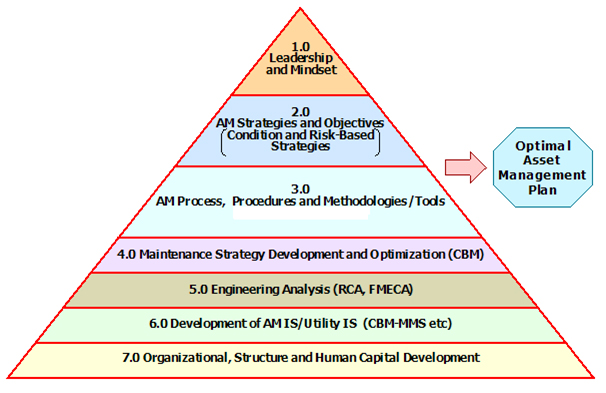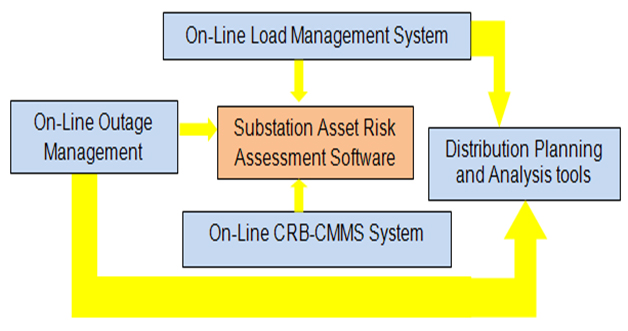

Utilities are embarking on Condition and risk Based asset Management strategies which entails the development of supportive information systems. As well decision support or analysis tools are required to guide risk-based decision-making for optimal asset management utilization. Such a strategic capability is critical in ensuring risk-based decisions meet with asset management objectives for optimizing cost, performance and especially reliability and safety or operational risks. The Figure below illustrates all the necessary elements and procedures required to realize these objectives. The efficient delivery of an optimal asset management plan integrates key asset management solutions namely asset maintenance, testing, replacement and renewal etc.

Utilities are attempting to classify equipment and integrated assets or infrastructure based on type, risk or critical service applications. This classification seeks to drive asset management solutions in terms of design and as well operational and maintenance requirements. In view of the necessity for detailed information for risk assessment based on asset groups or classes embedded in the overall infrastructure, the existing framework is at best a highly subjective one. The Figure below indicates a fully integrated Asset Management Information System. Substation Asset Risk Assessment is one of the key components that is necessary to fully implement condition and risk-based asset management strategies consistent with this now industry standard PAS 55.

The key information feeding into Substation Asset Risk Assessment is as follows:
The objectives for the Development of Substation Asset Risk Assessment Methodology and Analysis are as follows: